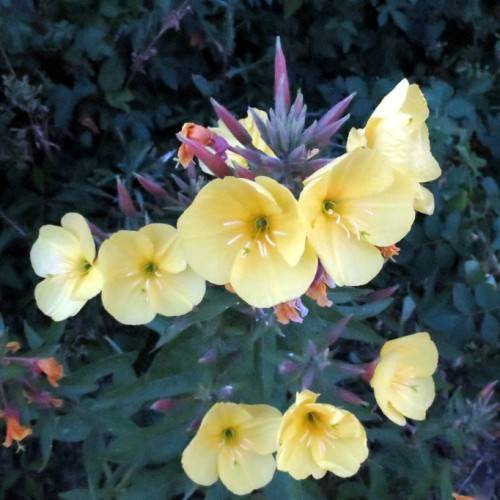
evening primrose
Oenothera 'Lemon Sunset'
Cycle:
Herbaceous Perennial
Watering:
Minimum
Hardiness Zone:
5 - 9
Flowers:
Flowers
Sun:
Full sun
Leaf:
Yes
Growth Rate:
Low
Maintenance:
Low
Drought Tolerant:
Yes
Salt Tolerant:
Yes
Care Level:
Medium
watering
The Evening Primrose, or Oenothera 'Lemon Sunset', is a slightly drought-tolerant plant that prefers soil with good drainage. It will benefit from regular watering to encourage blooming. Generally, water Evening Primrose every 2 to 3 days, or longer in hot weather, to keep the soil moist. Adjust frequency and amount of watering accordingly depending on the season, the climate, the temperature, and the size of the plant. Ensure that soil is evenly moist, but not soggy. During the hottest summer months, you may need to water every day. During fall and winter the plant can go longer without water. Always water the plant at the base, not the foliage, and avoid splashing.
sunlight
Evening primrose (Oenothera 'Lemon Sunset') requires about 4-6 hours of full sun exposure per day, which is typically divided into 2 sessions: morning and afternoon sun. However, for best growth and flowering, the evening primrose should receive at least 6 hours of direct sun per day. Planting in a spot that receives at least half-day sun is ideal; if not possible, try to select a spot that receives at least 4 hours of full sun daily. Morning sun is best for evening primrose, as it helps to hold the temperature down in the late afternoon, which is beneficial for blooming and maintaining foliage.
pruning
Evening primrose (Oenothera 'Lemon Sunset') should be pruned on a regular basis for optimum growth. Prune in early to mid-spring, before new growth appears, to maintain an attractive shape and size. Ensure a pair of sharp and sterilized pruners are used, and remove dead, dying, and diseased branches back to healthy tissue. This plant needs light to moderate pruning, removing up to 1-third of the stem and flower heads to encourage new growth. If getting too large, prune back the entire plant to roughly half its size. The evening primrose may also require occasional deadheading of spent flowers to encourage continual bloom throughout the growing season.
